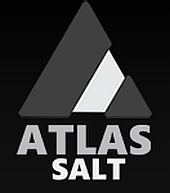 Appia outlines exploration plans for Sask. properties
Appia outlines exploration plans for Sask. properties
2021-06-14 12:00 ET – News Release
Mr. Tom Drivas reports
APPIA ANNOUNCES START OF SUMMER EXPLORATION PROGRAM ON RARE EARTH ELEMENTS AND URANIUM PROJECTS
Appia Energy Corp. has provided details regarding the company’s planned aggressive exploration activities on the high-grade critical rare earth elements (REE) Alces Lake project, and the North Wollaston and Loranger uranium projects, Athabasca basin area, Northern Saskatchewan.
Alces Lake high-grade REE project
With a planned comprehensive aerial survey and core drilling program to establish the project’s resource potential, the exploration team has been deployed to the project area. Planned activities have commenced and include the following:
- More than 6,000 metres of helicopter-supported diamond drilling with two diamond drill rigs focused on discovering new high-grade zones and delineating the extent of known high-grade REE mineralization;
- Flying a high-resolution airphoto survey, as well as a digital elevation model over the entire property to aid in aerial geophysical survey calibration, as well as providing accurate data for future resource evaluations;
- A project-wide high-resolution radiometric and magnetic survey designed with 50-metre flight-line spacing and flying within 10 to 20 metres of the surface to commence June 15, 2021;
- A 2,500-by-2,500-metre ground magnetic and VLF-EM (very low frequency electromagnetic) survey designed to identify structures and geological trends associated with mineralization;
- Local and regional prospecting, mapping and sampling to discover more high-grade REE zones and to better understand the geological controls of REE mineralization;
- A new all-weather camp has also been constructed at Alces Lake, which will allow exploration and drilling activities to continue well into the fall and winter.
The company is fully financed for the 2021 program, and committed to completing the largest exploration and diamond drilling program on the project to date. Exploration permits for the proposed activities are in hand and newly approved permits have been received.
With the largest exploration and delineation program in the company’s history now under way, exploration results will be released as they become available. Preliminary analysis of the summer exploration and drilling program will follow and lead to the preparation of a National Instrument 43-101 technical report with 3-D geophysical-geological models and a preliminary economic assessment report expected to follow in late 2021. The Alces Lake project encompasses some of the highest-grade total and critical REEs and gallium mineralization in the world, hosted within a number of surface and near-surface occurrences that are open at depth and along strike.
Since detailed exploration began at Alces Lake in 2017, a total of 74 REE-, gallium- and uranium-bearing surface zones, and occurrences of the minerals system have been discovered, suggesting a high exploration potential of the system over 45 kilometres strike length of the project. To date, less than 1 per cent of the project area has been explored with diamond drilling.
The project is located in Saskatchewan, in the same provincial jurisdiction that is developing a first-of-its-kind rare earth processing facility in Canada (currently under construction by the Saskatchewan Research Council, scheduled to become operational in 2022). The Alces Lake project area is 14,344 hectares (35,420 acres) in size and is 100 per cent owned by Appia. The project is located close to an old mining camp with existing support services, such as transportation (15 km from the nearest trail), energy infrastructure (hydroelectric power), a 1,200-metre airstrip that receives daily scheduled services and access to heavy equipment.
To ensure safe work conditions are met for the work force, the company has developed exploration guidelines that comply with the Saskatchewan public health orders and the public health order respecting the Northern Saskatchewan administration district in order to maintain social distancing and help prevent the transmission of COVID-19.
Note: Critical rare earth elements are defined herein as those that are in short supply and high demand for use in permanent magnets and modern electronic applications such as electric vehicles and wind turbines (neodymium, praseodymium, dysprosium and terbium).
North Wollaston and Loranger uranium projects
The company has contracted two 200-metre line-spaced helicopter-borne VTEM (versatile time domain electromagnetic), horizontal magnetic gradiometer and radiometric geophysical surveys over the entire North Wollaston project (a total of 925 line kilometres) and over the southern three mineral dispositions of the Loranger project (a total of 379 line kilometres).
The VTEM Surveys will be flown by Geotech Ltd. of Mississauga, Ont., and are designed to i) better define the conductive zones previously identified from historic airborne electromagnetic surveys, and ii) highlight areas of potential surface uranium mineralization using modern radiometric techniques.
Geotech’s proprietary VTEM heliborne survey is an innovative and proven airborne EM system that delivers unparalleled high spatial resolution and superior depth of investigation in precision EM measurements. The VTEM surveys are scheduled to start in August.
The technical content in this news release was reviewed and approved by Dr. Irvine R. Annesley, PGeo, adviser to Appia’s board of directors, and a qualified person as defined by National Instrument 43-101.
About Appia Energy Corp.
Appia is a Canadian publicly listed company in the rare earth element and uranium sectors. The company is currently focusing on delineating high-grade critical rare earth elements on the Alces Lake property, as well as exploring for high-grade uranium in the prolific Athabasca basin on its Loranger, North Wollaston and Eastside properties. The company holds the surface rights to exploration for 65,601 hectares (162,104 acres) in Saskatchewan.
The company also has a 100-per-cent interest (subject to a 1-per-cent uranium production payment royalty and a 1-per-cent net smelter return royalty on any precious or base metals payable, provided that the price of uranium is greater than $130 (U.S.) per pound) in 12,545 hectares (31,000 acres), with rare earth element and uranium deposits over five mineralized zones in the Elliot Lake camp, Ontario. The camp historically produced over 300 million pounds of U3O8 and is the only Canadian camp that has had significant rare earth element (yttrium) production. The deposits are largely unconstrained along strike and down dip.
We seek Safe Harbor.



























